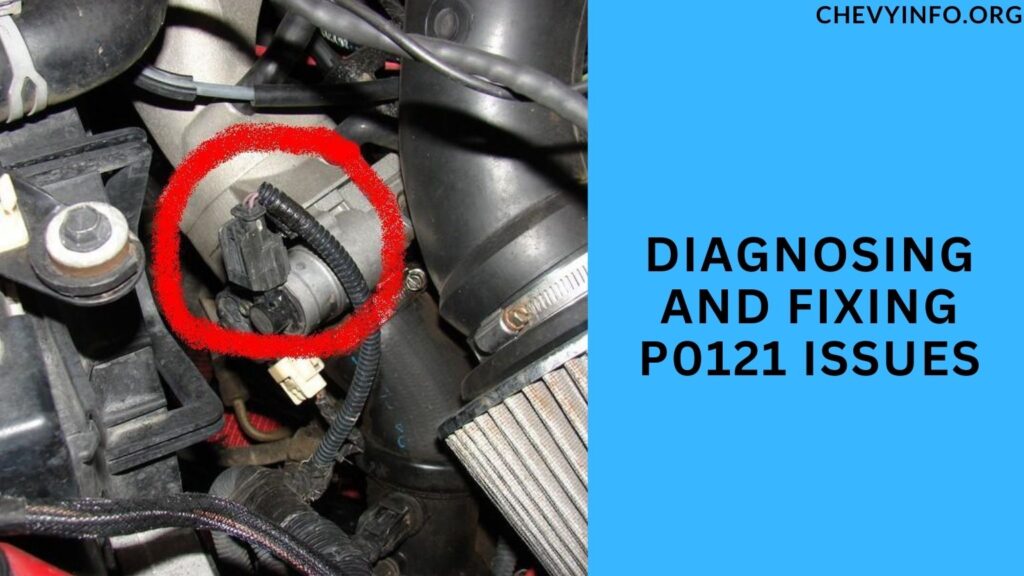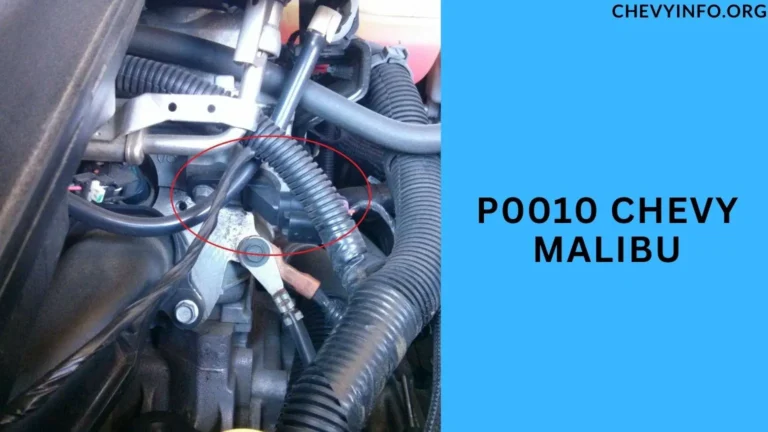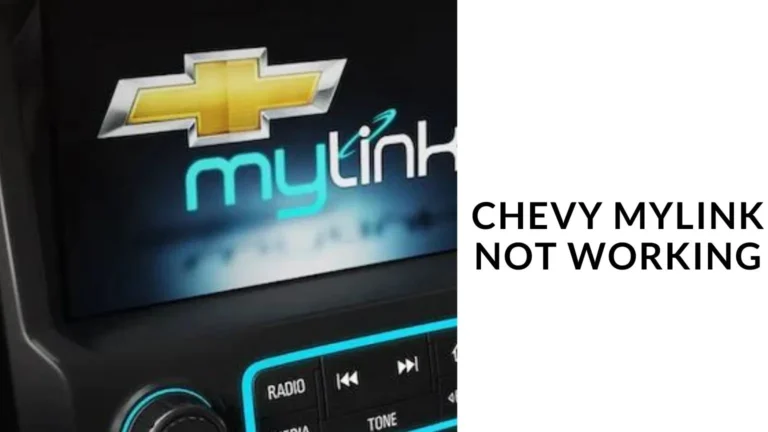Code P0121 Chevy (Mean, Causes & Fixing Tips) of 2024
In the realm of automotive diagnostics, OBD-II (On-Board Diagnostics II) codes play a crucial role in identifying issues within a vehicle’s systems.
Among these codes, the code p0121 stands out as a significant indicator of potential problems within the throttle position sensor circuit.

What is the P0121 Code?
The P0121 code specifically refers to a malfunction detected in the throttle position sensor (TPS) circuit A.
This sensor is vital for communicating the throttle position to the engine control module (ECM), ensuring proper fuel delivery and engine performance.
Common Causes of the Code p0121
The P0121 code in OBD-II systems typically indicates a problem with the throttle position sensor (TPS) circuit. Here are some common causes associated with this code:
Faulty Throttle Position Sensor (TPS)
The TPS is responsible for sending throttle position data to the engine control module (ECM). If the sensor malfunctions or sends incorrect signals, it can trigger the P0121 code.
Wiring Issues
Problems in the wiring connecting the TPS to the ECM can lead to the P0121 code. This includes issues like frayed wires, corrosion, or loose connections that disrupt signal transmission.
Throttle Body Malfunction
A malfunctioning throttle body can affect the TPS’s operation, leading to erroneous readings and the P0121 code. Common throttle body issues include carbon buildup, throttle plate sticking, or motor failures.
ECM Problems
In rare cases, a malfunction in the engine control module itself can cause the P0121 code. This may include internal faults, software glitches, or communication errors between the ECM and the TPS.
Environmental Factors
Extreme temperatures or moisture ingress can also impact the TPS and its circuitry, potentially triggering the P0121 code.
Poor Electrical Grounds
Inadequate grounding within the TPS circuit or related components can lead to voltage fluctuations and erroneous readings, resulting in the P0121 code.
Mechanical Issues
Issues like throttle plate sticking, throttle linkage problems, or obstructions in the throttle body can indirectly affect TPS performance and lead to the P0121 code.
Previous Repairs
Improper repairs or installations related to the TPS, throttle body, or ECM can introduce issues that trigger the P0121 code.
Symptoms of a P0121 Code
When a vehicle triggers the P0121 code, drivers may notice several symptoms, such as:
- Inconsistent acceleration
- Poor engine performance
- Difficulty maintaining speed
- Illuminated Check Engine Light (CEL)
Diagnosing and Fixing P0121 Issues

Diagnosing and fixing issues related to the P0121 code requires a structured approach to accurately identify the underlying cause and implement effective solutions. Here’s a step-by-step guide:
Diagnostic Trouble Code (DTC) Scan
Use an OBD-II scanner to retrieve the specific trouble code (P0121) and any related codes stored in the vehicle’s ECM.
Note down the freeze frame data, which provides information about the vehicle’s operating conditions when the code was triggered.
Visual Inspection
Conduct a visual inspection of the throttle body, throttle position sensor (TPS), and related wiring harnesses.
Look for signs of damage, corrosion, loose connections, or worn components that could affect the TPS circuit.
Throttle Position Sensor (TPS) Testing
Use a multimeter to test the TPS for proper voltage output and resistance.
Follow manufacturer specifications to ensure the TPS is functioning within the recommended range.
Check for smooth throttle response and accurate throttle position readings during testing.
Wiring and Connector Examination
Inspect the wiring harnesses connected to the TPS, throttle body, and ECM.
Look for damaged wires, frayed insulation, corroded connectors, or loose terminals.
Perform continuity tests and voltage checks to ensure proper signal transmission within the circuit.
Throttle Body Inspection
Remove and inspect the throttle body for any carbon buildup, debris, or mechanical issues.
Clean the throttle body and throttle plate if necessary to ensure smooth operation.
Check for any obstructions or sticking components that could affect TPS functionality.
ECM Testing
Use diagnostic tools to assess the ECM for potential faults, software glitches, or communication errors.
Check for any stored codes related to the TPS circuit or other relevant systems.
Perform ECM resets or reprogramming if recommended by manufacturer guidelines.
Repair or Replacement
Based on the diagnostic findings, repair or replace components as needed.
Replace a faulty TPS with a new, compatible unit following manufacturer specifications.
Repair damaged wiring harnesses or connectors to ensure secure connections and proper signal transmission.
Address any mechanical issues in the throttle body or related components that impact TPS performance.
Relearn Procedure
After repairs or replacements, perform a TPS relearn procedure using professional diagnostic tools or following manufacturer instructions.
This step ensures that the ECM properly calibrates the new TPS and adjusts the throttle response accordingly.
Importance of Addressing P0121 Promptly
Ignoring or delaying repairs related to the P0121 code can lead to detrimental effects, such as:
- Reduced fuel efficiency
- Engine misfires
- Potential safety hazards due to erratic engine behavior
Therefore, prompt attention and proper diagnosis of a P0121 code are crucial for maintaining vehicle performance and safety.
People also ask
How much does P0121 cost?
The cost of addressing a P0121 code can vary significantly depending on several factors, such as the vehicle make and model,
the specific cause of the code (e.g., a faulty sensor, wiring issues, ECM problems), and labor rates at the repair facility.
On average, repairing or replacing components associated with the P0121 code can range from $100 to $500 or more, including parts and labor costs.
It’s advisable to consult a professional mechanic for a precise cost estimate based on your vehicle’s situation.
Can I drive with a P0121 code?
It’s not recommended to drive with a P0121 code as it can lead to issues like inconsistent acceleration,
poor engine performance, and potential safety hazards due to erratic engine behavior. It’s best to address the code promptly to avoid further complications.
How do you fix a throttle position sensor?
To fix a throttle position sensor (TPS), you typically need to:
Disconnect Battery: Disconnect the vehicle’s battery to prevent electrical accidents.
Locate TPS: Locate the TPS on the throttle body.
Remove Old TPS: Remove the old TPS by disconnecting electrical connectors and unbolting it from the throttle body.
Install New TPS: Install the new TPS in the correct position and secure it with bolts.
Connect Wires: Reconnect electrical connectors to the new TPS.
Reconnect Battery: Reconnect the vehicle’s battery.
Reset ECM: Reset the Engine Control Module (ECM) and perform a TPS relearn procedure if required.
How do I fix code P0121?
To fix code P0121, you can:
Diagnose: Use an OBD-II scanner to confirm the code and pinpoint the issue.
Inspect TPS: Check the throttle position sensor (TPS) for faults or malfunctions.
Repair or Replace: Repair or replace the TPS if faulty, addressing wiring or connector issues if necessary.
Clear Code: Clear the code using the OBD-II scanner.
Test Drive: Test drive the vehicle to ensure the issue is resolved.
Conclusion
In Conclusion, The P0121 OBD-II code serves as a key indicator of throttle position sensor circuit issues in vehicles.
Understanding its causes, symptoms, and diagnostic procedures is essential for efficient repairs and optimal vehicle performance.

Henry Worner, a seasoned automotive expert with over 13 years of experience in car repair, maintenance, and performance enhancement, ChevyInfo.org was born out of a passion for Chevrolet vehicles. Henry’s deep-rooted love for everything Chevy has driven him to create a platform where fellow enthusiasts, car owners, and anyone interested in Chevy cars can find valuable insights, tips, and guidance.






